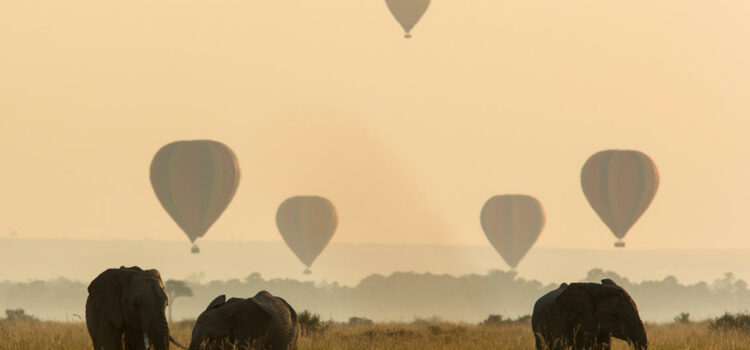Known for their long elegant necks and beautiful leopard-like spotted coats, the giraffe is one of the most recognizable and loved mammals in the animal kingdom. From being depicted in children’s books, to being seen in zoo’s across the world and consistent sightings on safari, this fascinating animal has mesmerized man for centuries. But did you know that there are in fact nine different types of giraffe found on the African continent?
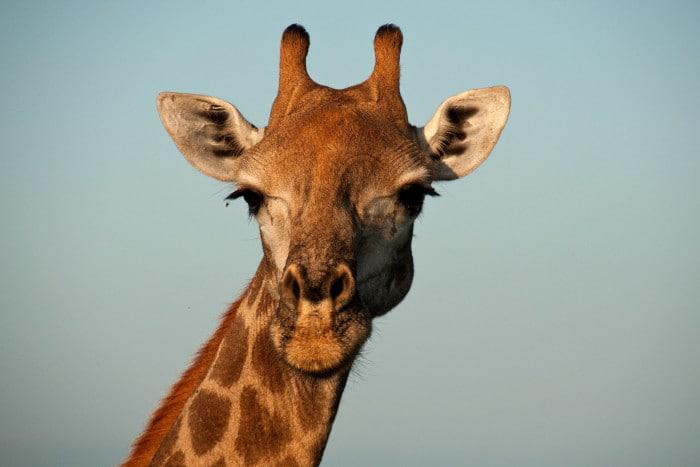
Known as the tallest mammal on the African savannah, their neck has the same number of vertebrae, 7 to be precise, as humans. Giraffes have also been built for agility, power and speed, and there are very few other animals that can move as swiftly as they can. They have an incredible sense of smell, hearing and sight and are always acutely aware of what’s going on around them on the savannah. The differences of the nine subspecies of giraffe are subtle, but once you know what to look out for such as their varying coat colours, coat patterns and where they naturally reside, you’ll be able to tell them apart with ease!
Reticulated Giraffe
The Reticulated giraffe (also known as the Somali giraffe) is probably one of the best known of all the nine subspecies. Foundin Somalia, southern Ethiopia and northern Kenya, this giraffe together with the Rothschild giraffe is one of the most recognizable types of giraffe.
They are distinguished by their large, liver-coloured, polygonal spots that are outlined by brilliant-white lines. The blocks of colour can also sometimes cover their legs and may be deep red.
Reticulated giraffes are known for their extremely long neck (which can measure 8 feet in length and weigh up to 500 pounds!). Their long necks have developed due to the male ritual called ‘necking’ (where two males slam their necks into one another to fight for the female’s attention), and thus, the tallest and strongest necks are victorious which in turn is passed through the genes to future generations.
The astonishing height of the Reticulated giraffe has made it one of the most successful browsers of the African savannah, as it can reach branches that other hoofed animals cannot reach. They are also surprisingly fast and can reach speeds of up to 35 miles per hour (56 kilometers per hour).
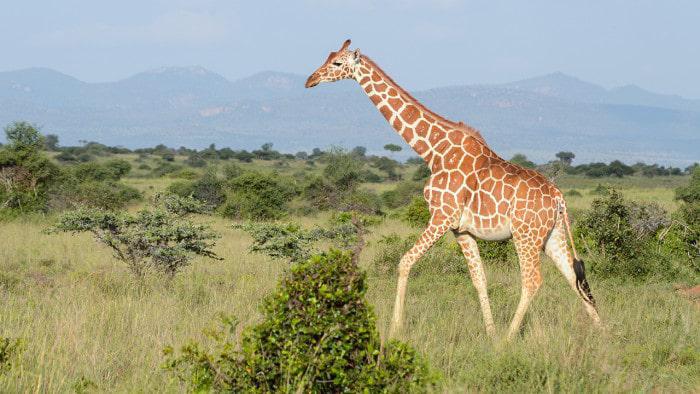
Nubian Giraffe
This subspecies is found in North Africa in Ethiopia, the Sudan and South Sudan and lives in savannahs and woodlands. The Nubian giraffe used to be commonly found all over Northeast Africa, but is now on the endangered list with around 650 animals thought to remain in the wild today.
This type of giraffe can be recognized by its clearly defined lightly brown coloured spots surrounded mainly by white lines, while its underbelly does not have any spots.

Rothschild Giraffe
One of the most endangered giraffe subspecies is the Rothschild’s giraffe (also known as the Ugandan or Baringo giraffe) with fewer than 700 animals found in Uganda and Kenya.
The Rothschild’s giraffe is easily identifiable mostly by the colouring of its coat. Where the Reticulated giraffe has bright-whitish lines running next to patches of brown, the Rothschild’s giraffe’s coat is beige with dark patches which can even be orange, not dissimilar to the beautiful markings of leopards. They also don’t display any markings on their long legs making it appear as if they are wearing elegant white stockings. Most giraffe species have two horns on the top of their head, but the Rothschild giraffe can have up to five.
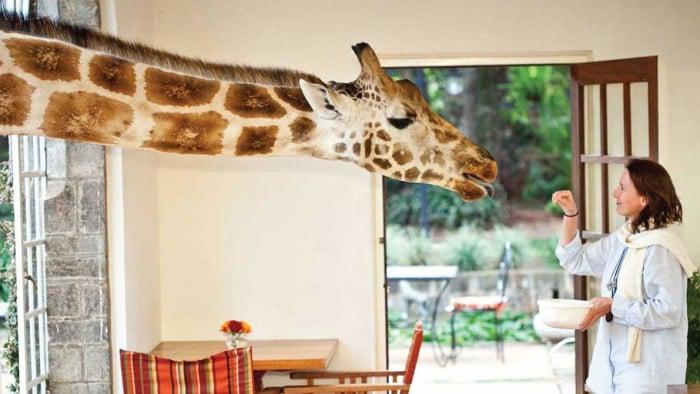
Masai Giraffe
The Masai giraffe (also called Kilimanjaro giraffe) is the tallest land mammal on earth and the largest of all the subspecies of giraffe. Found in Tanzania and Kenya, they can grow to around 19 feet tall and the larger males can weigh 2,000 to 3,000 pounds.
Their spots are jagged when compared to the smooth outlines of the other types of giraffe with a short tassel of hair on their tail. The males also display darker spots than the females with the dominant male’s spots being the darkest of all animals in his herd.
The Masai giraffe has powerful legs and hooves that keep predators at bay, and an adult can easily kill them with one swift kick. They are also adept runners with top speeds of around 35 miles per hour.

Angolan Giraffe
The Angolan giraffe (also known as the Namibian or smoky giraffe) is, in fact, extinct in Angola but is native to most parts of Namibia, south-western Zambia, western Zimbabwe and central Botswana. A genetic study carried out in 2009, suggests that the giraffe found in the Etosha National Park, and northern Namib Desert form a separate subspecies.
Relatively light in colour, the Angolan giraffe displays big brown blotches with angular and slightly notched edges that cover the whole legs but not the upper part of the face. Their neck and rump patches are also fairly small, and they can be recognized by their white ear patch. 20,000 animals are estimated to roam the wild, with about 20 being kept in zoos around the world.

South African Giraffe
The South African (or Cape) giraffe is native to South Africa, southwestern Zambia, Zimbabwe, Botswana and Mozambique.
This subspecies is the most commonly found with more than 35,000 animals believed to live in the wild. Their coat patterns extend all the way to their hooves and consist of star-shaped spots with a tan-coloured background.
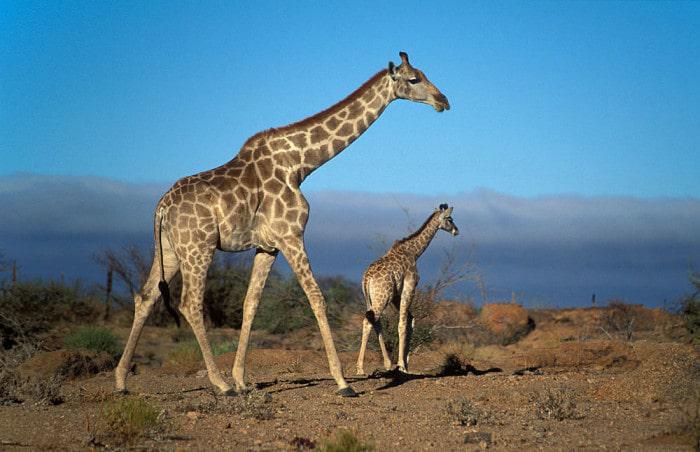
Thornicroft’s Giraffe
Thornicroft’s (also known as Rhodesian) giraffe has survived as a completely cut off population in a small part of north-eastern Zambia. Only found in the South Luangwa Valley, this giraffe subspecies is separated by at least 400 kilometers from any other giraffe.
It can be identified by its cream background with dark, big, ragged leaf-shaped marks that continue down to its legs. 550 individuals are believed to exist in the wild today.

West African Giraffe
The West African (also widely known as the Nigerian) giraffe is distinguished by its much lighter coat with rectangular tan markings divided by chunky cream-coloured lines.
Once roaming in large numbers throughout Nigeria to Senegal, by the late 1990s only 49 animals survived in the whole of West Africa. Thankfully this giraffe is now protected by the Nigerian government, and their number has risen to 310 as of 2011. The West African giraffe is the only large mammal that has remained in an isolated pocket near the capital Niamey, sharing the land with local villagers.

Kordofan giraffe
Last, but not least, the Kordofan giraffe inhabits some of Africa’s war-ravaged areas such as western South Sudan, southern Chad, northern Cameroon, the Central African Republic and the northern Democratic Republic of Congo.
This giraffe’s spots are paler and much more irregular with no markings below the hocks. Less than 2,000 animals survive in the wild today.

